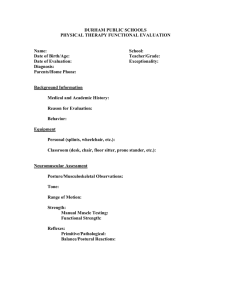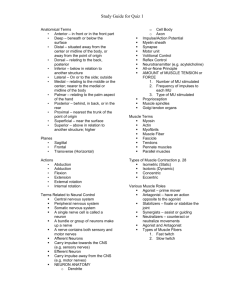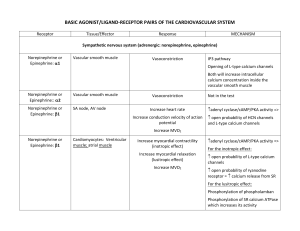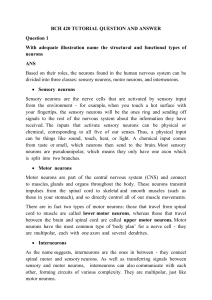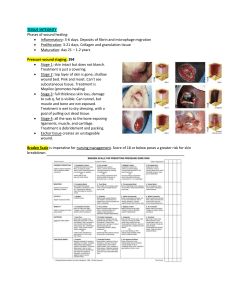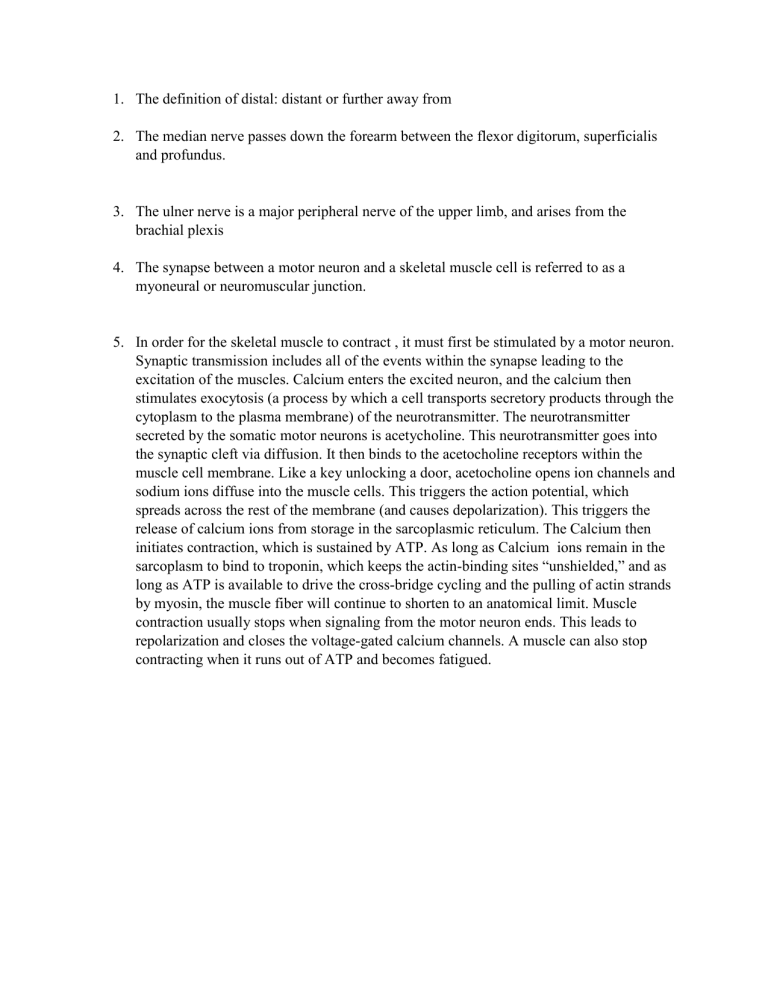
1. The definition of distal: distant or further away from 2. The median nerve passes down the forearm between the flexor digitorum, superficialis and profundus. 3. The ulner nerve is a major peripheral nerve of the upper limb, and arises from the brachial plexis 4. The synapse between a motor neuron and a skeletal muscle cell is referred to as a myoneural or neuromuscular junction. 5. In order for the skeletal muscle to contract , it must first be stimulated by a motor neuron. Synaptic transmission includes all of the events within the synapse leading to the excitation of the muscles. Calcium enters the excited neuron, and the calcium then stimulates exocytosis (a process by which a cell transports secretory products through the cytoplasm to the plasma membrane) of the neurotransmitter. The neurotransmitter secreted by the somatic motor neurons is acetycholine. This neurotransmitter goes into the synaptic cleft via diffusion. It then binds to the acetocholine receptors within the muscle cell membrane. Like a key unlocking a door, acetocholine opens ion channels and sodium ions diffuse into the muscle cells. This triggers the action potential, which spreads across the rest of the membrane (and causes depolarization). This triggers the release of calcium ions from storage in the sarcoplasmic reticulum. The Calcium then initiates contraction, which is sustained by ATP. As long as Calcium ions remain in the sarcoplasm to bind to troponin, which keeps the actin-binding sites “unshielded,” and as long as ATP is available to drive the cross-bridge cycling and the pulling of actin strands by myosin, the muscle fiber will continue to shorten to an anatomical limit. Muscle contraction usually stops when signaling from the motor neuron ends. This leads to repolarization and closes the voltage-gated calcium channels. A muscle can also stop contracting when it runs out of ATP and becomes fatigued.


